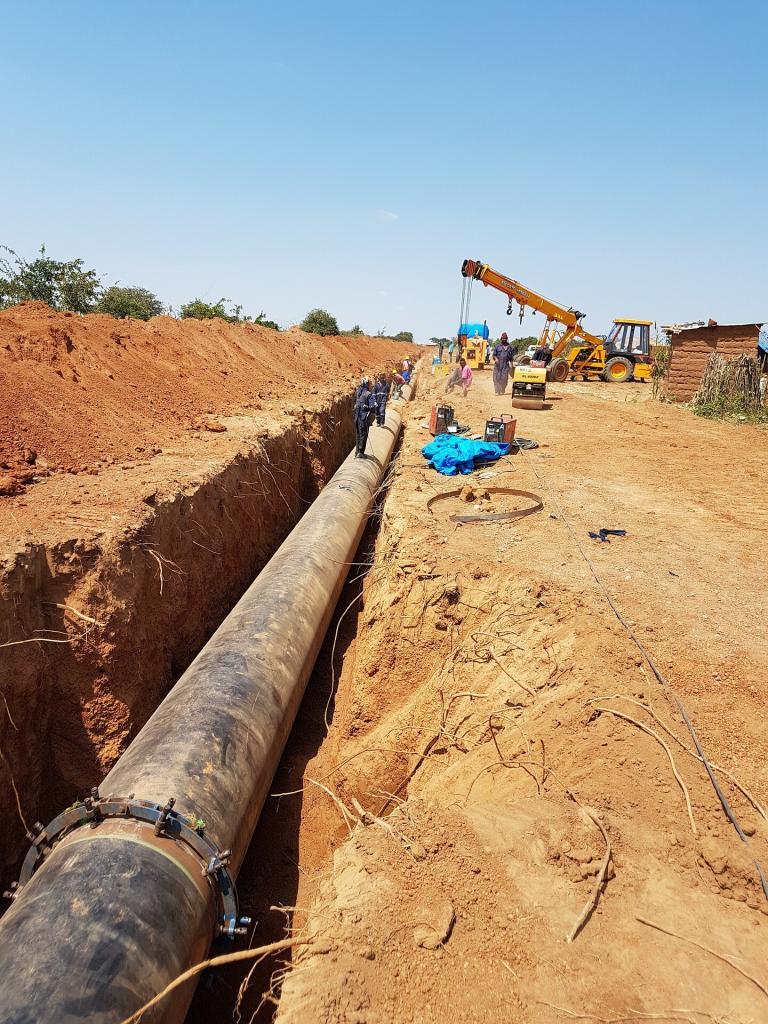
Backfilling is an essential step in construction and utility installation projects, including the placement of underground utilities such as pipes, cables, or conduits. Once the utility installation is complete, a trench is typically left open, and backfilling refers to the process of refilling that trench with excavated materials or suitable fill material.
Backfilling is a critical step in construction and excavation projects. It ensures structural stability, protects utilities, and restores the site to its intended purpose. Proper selection of backfill materials, compaction techniques, and consideration of drainage requirements are key factors in successful backfilling operations.
The choice of backfill material depends on various factors such as the nature of the project, soil conditions, and engineering requirements. Common materials used for backfilling include native soil, sand, gravel, crushed stone, and compacted fill materials.
By following proper backfilling techniques and using suitable materials, the backfilled trench can provide the necessary support, protection, and stability for the installed utility, ensuring its long-term performance and minimizing the risk of damage or failure.
Backfilling Trenches Overview
 1. Purpose: The primary purpose of backfilling is to restore the excavated area to its original ground level or as close to it as possible. It provides support and stability to the utility installation, protects it from damage, and prevents voids or settling that could occur due to soil erosion or compaction.
1. Purpose: The primary purpose of backfilling is to restore the excavated area to its original ground level or as close to it as possible. It provides support and stability to the utility installation, protects it from damage, and prevents voids or settling that could occur due to soil erosion or compaction.
2. Excavated materials: The excavated materials obtained during the trenching process, such as soil, gravel, or rocks, are commonly used for backfilling. However, the suitability of the excavated materials for backfilling depends on factors such as their composition, compaction properties, and compatibility with the utility being installed.
3. Fill material: In some cases, the excavated materials may not be suitable for backfilling due to their composition or other factors. In such situations, alternative fill materials like sand, crushed stone, or engineered backfill materials may be used. These materials are selected based on their compaction characteristics, drainage properties, and compatibility with the utility or structure being backfilled. Fill material such as crushed stone or gravel can be stored on the job site in a bedding box.
4. Compaction: Proper compaction of the backfill material is crucial to ensure stability and support for the installed utility. Compaction eliminates voids and air pockets in the backfill, reducing the risk of settlement or movement. Compaction methods may include mechanical compaction equipment such as compactors or rollers, or manual compaction techniques depending on the project requirements.
5. Backfilling techniques: Different techniques can be employed for backfilling based on the specific project requirements. These techniques include the use of equipment like backhoes or excavators to place the fill material into the trench in layers, which are then compacted. In some cases, specialized methods like jetting or tremie pipes may be used for more precise backfilling around certain utilities.
6. Backfilling considerations: Several factors should be considered during the backfilling process. These include the type of utility being installed, soil conditions, groundwater levels, frost susceptibility, and any required compaction specifications or standards set by local building codes or project specifications. It's important to follow these guidelines to ensure the longevity and functionality of the utility.
By following proper backfilling techniques and using suitable materials, the backfilled trench can provide the necessary support, protection, and stability for the installed utility, ensuring its long-term performance and minimizing the risk of damage or failure.

Trench Safety Equipment: Trench Boxes Manhole Boxes, Bedding Boxes, Road Plates
Key Safety Considerations to Keep in Mind
1. Trench collapse: During the backfilling process, there is a risk of trench collapse if the excavated trench is not adequately supported or if the backfill material is not properly compacted. Trench collapses can result in serious injuries or fatalities. To mitigate this risk, shoring, trench boxes, or other protective systems should be used to ensure the stability of the trench walls.
2. Equipment operation: Backfilling often involves the use of heavy equipment such as excavators, backhoes, or compactors. It is important to ensure that operators are trained and competent in operating the machinery safely. Proper precautions should be taken to prevent accidents, such as maintaining clear communication between equipment operators and workers on the ground.
3. Hazardous materials: In some cases, the backfill material may contain hazardous substances or contaminants. For example, if the excavated soil contains chemicals, toxins, or pollutants, proper measures should be taken to handle and dispose of such materials safely and in compliance with environmental regulations.
4. Utility integrity: Care must be taken during the backfilling process to avoid damaging the utility being installed or any existing utilities nearby. Accidental contact or excessive pressure from the backfill material can cause leaks, breaks, or other damage to the utility lines. It is important to follow the recommended guidelines and exercise caution to protect the integrity of the utilities.
5. Worker safety: Backfilling can involve physical labor, working in close proximity to heavy equipment, and potential exposure to dust or airborne particles. Adequate personal protective equipment (PPE) should be provided to workers, including hard hats, high-visibility clothing, gloves, and respiratory protection if needed. Regular safety training and awareness programs should be conducted to ensure workers are aware of the potential hazards and know how to mitigate them.
6. Environmental considerations: Backfilling should be carried out in an environmentally responsible manner. Measures should be taken to prevent erosion, sediment runoff, or contamination of nearby water bodies. Proper waste disposal and recycling practices should be followed for any materials generated during the backfilling process.
It is crucial to prioritize safety at all stages of the backfilling process to protect the well-being of workers, prevent accidents, and ensure compliance with safety regulations and standards.

